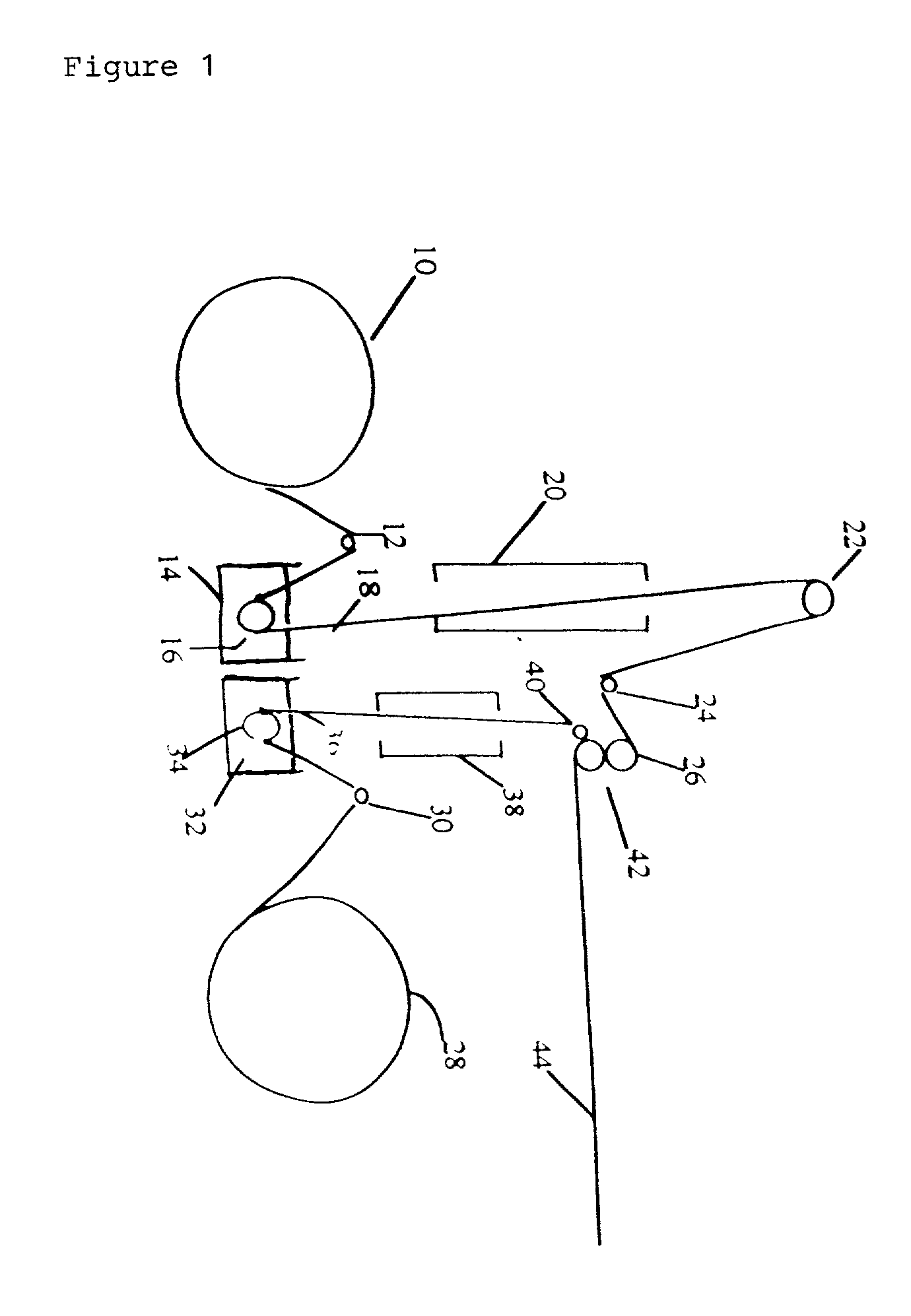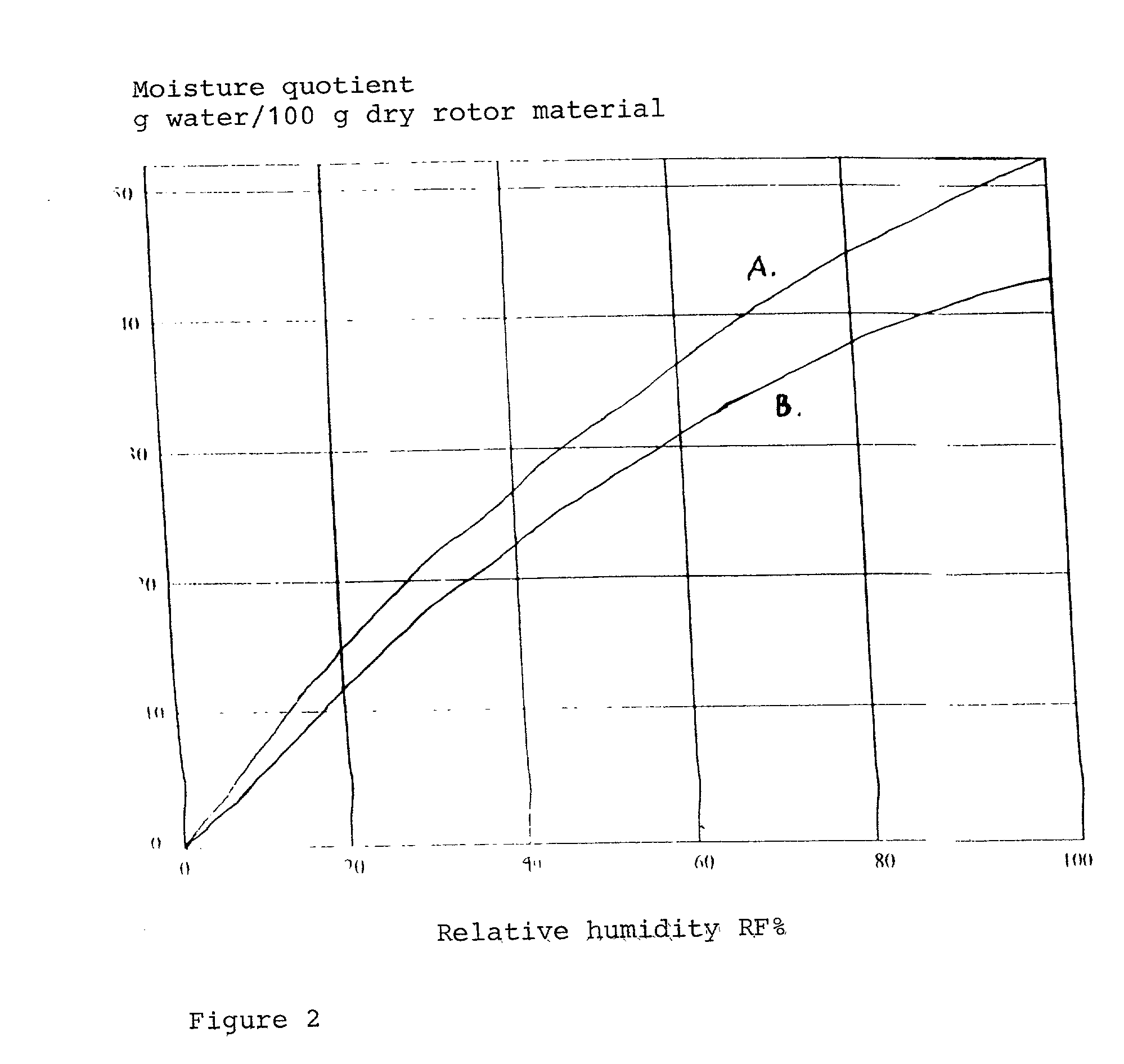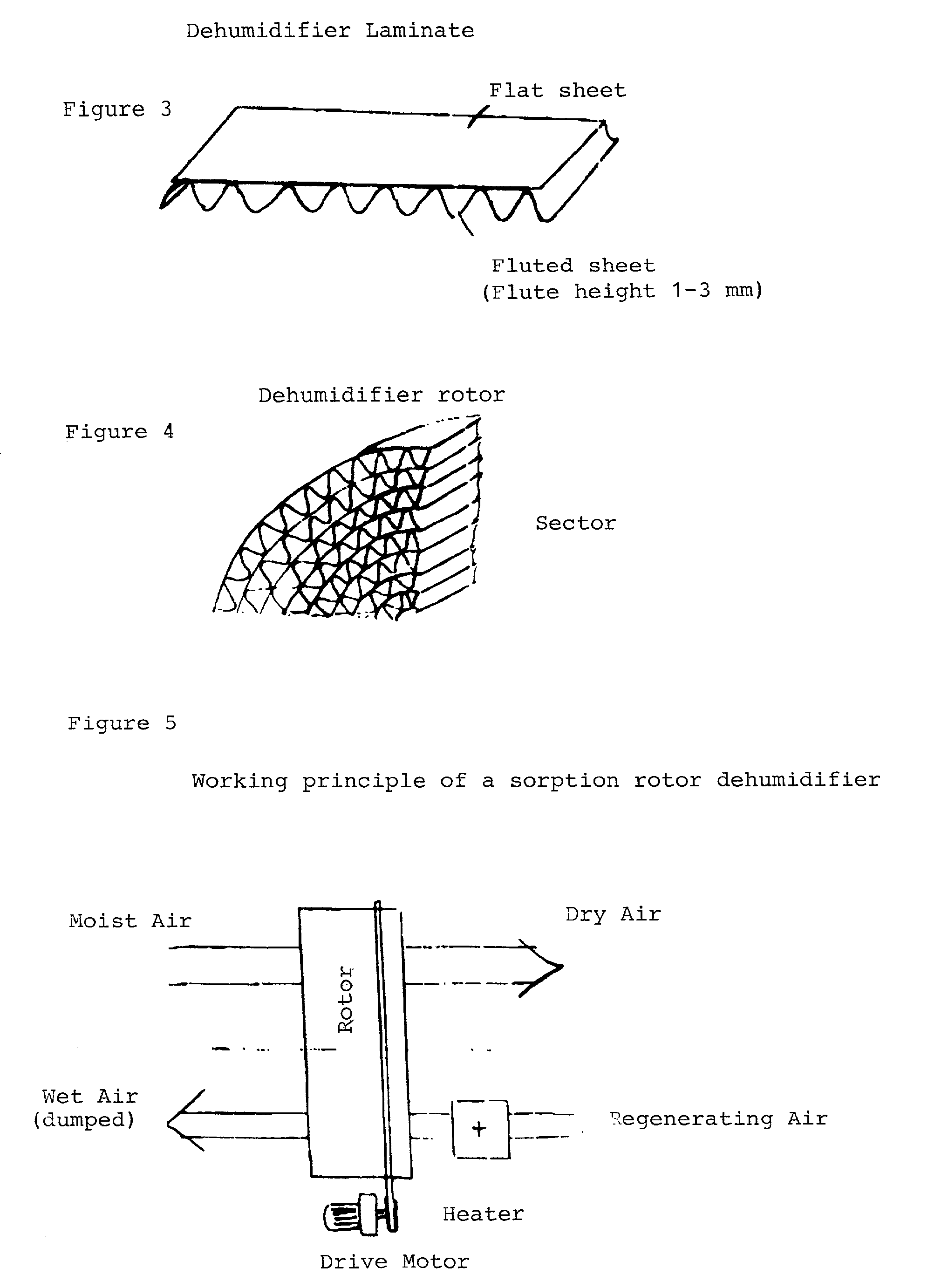Novel method for the production of a dehumidifying element
- Summary
- Abstract
- Description
- Claims
- Application Information
AI Technical Summary
Problems solved by technology
Method used
Image
Examples
example b mole
ratio (SiO.sub.2 / Na.sub.2O 3.35 3.35 Density / kg / dm.sup.3) 1.425 1.450 Viscosity 377 mPa.s at 45.degree. C. 800 mPa.s at 90.degree. C.
[0042] The paper web 18 is guided down beneath the level of the highly concentrated, hot (having a temperature of from 45-95.degree. C.) waterglass solution in the bath 14 with the aid of a roller 16 submerged in the solution. The paper web 18 is drenched in highly concentrated waterglass solution as it passes through the bath 14, such as to become saturated with said solution. Subsequent to saturation of the paper web, the web is passed up through a cooling chamber 20 in which air at room temperature is blown onto the web 18. The web 18 is then delivered to a fluting roll 26, via guide rollers 22 and 24, to form fluted paper that includes a large number of small flutes. As before mentioned, the resultant fluted paper will typically have a flute height of 1-5 mm and a flute length of 1.5-7 mm. A second paper web 36 is unwound from the paper roll 28 and...
example
[0052] 16 kg molecular sieve of type 4A (Sylosiv A4, GRACE Davison, US) (pore opening diameter: .about.4 .ANG.) were added to 100 kg of highly concentrated waterglass of the type soda waterglass having an SiO.sub.2 / Na.sub.2O mole ratio of 3.35 and a density of 1.40 kg / dm.sup.3 and a temperature of 70.degree. C. This mixture was then used in the manufacture of a moisture exchange element in accordance with the invention. A reference element that lacked a molecular sieve was also produced.
[0053] The ability of the elements to take-up moisture at equilibrium was then measured, the results of this measurement being shown in FIG. 7. The moisture absorbency of the elements is given as weight-% water calculated on dry dehumidifying elements as a function of the temperature of ambient air. The moisture content of the air was at a constant 7.5 g / kg. The curve corresponding to the inventive element is designated (M), whereas the curve corresponding to the reference element is designated (K). ...
PUM
| Property | Measurement | Unit |
|---|---|---|
| Temperature | aaaaa | aaaaa |
| Temperature | aaaaa | aaaaa |
| Temperature | aaaaa | aaaaa |
Abstract
Description
Claims
Application Information
 Login to View More
Login to View More - R&D Engineer
- R&D Manager
- IP Professional
- Industry Leading Data Capabilities
- Powerful AI technology
- Patent DNA Extraction
Browse by: Latest US Patents, China's latest patents, Technical Efficacy Thesaurus, Application Domain, Technology Topic, Popular Technical Reports.
© 2024 PatSnap. All rights reserved.Legal|Privacy policy|Modern Slavery Act Transparency Statement|Sitemap|About US| Contact US: help@patsnap.com










